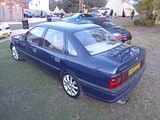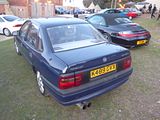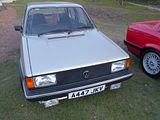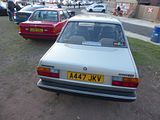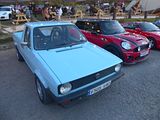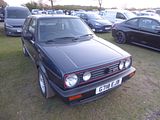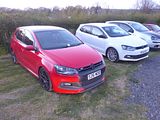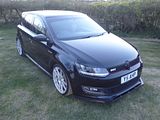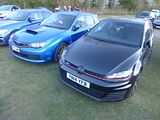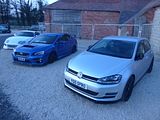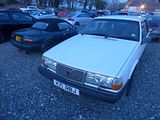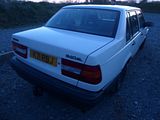Caffeine & Machine quickly became a venue that almost every car enthusiast in the country seemed to have heard about. Soon after opening in late 2018, the number of cars trying to attend forced a couple of extensions to the car park and it was not long before a ticket system had to be introduced to cover busy periods (weekends) to ensure that those who had travelled some distance could actually guarantee that they would be able to get onsite. Like all hospitality venues, Covid restrictions and lockdown forced Caffeiine & Machine to close completely, leaving the many enthusiasts for this venue to while away the early weeks of 2021 dreaming of the re-opening and the chance to see the eclectic array of cars that turn up and to enjoy the onsite food and drinks. Given all the additional outdoor seating that was set up to enable the place to function last autumn, it was clear that it would be possible to re-open from 12th April, when outdoor food and drink venues were permitted to operate. Deprived of this venue and meets in general for months it is no surprise that tickets for every weekend in April sold out instantly, meaning that the only way to get to Caffeine & Machine without waiting for demand to die down a bit, was either to go for a mid-week evening (with limited daylight) or an evening weekend slot. It was this latter which presented a first opportunity for me to attend, having been in Coventry earlier in the day taking advantage of the fact that leisure centres had also opened at the start of the week. Not needing a ticket, I came along with two friends, and we each brought our own car, though as the weather was nice, we did wonder if this would prove to be a mistake, as we guess the place might be a bit busy. We were not wrong. We arrived around 8pm, and the place was thronging, just as you would expect to find it in the day. Fortunately, there were some parking spaces. With daylight fading fast, the first priority was to get a look at the cars and get some photos before it got too dark, at which point it was a case of finding a seat and ordering food. Here are the cars that I did manage to photograph:
ABARTH
I knew that Abarth West Midlands had been very fast off the mark and organised a meet here for earlier in the day, so was rather expecting that a few of the attendees would have stayed on, and indeed I did come across a few Abarths parked up. I did not recognise the cars, or their owners among the crowd, though. There were a number of 500-based cars, including an example of the 595 ScorpioneOro, a limited edition model which was made available in the autumn of 2020 and which takes its inspiration from the livery of a racing Autobianchi A112 off 1979 and which also featured on a Fiat Ritmo model the following year.
There was also a 124 Spider here. These remain relatively rare in the overall scheme of things, with around 1750 of them sold in the UK, and the car having been taken off the market around the end of 2019, so it is unlikely to become any more commonplace. That means it has had a short on sale time in the UK, as the 124 Spider only went on sale in September 2016, at the same time as the Fiat version, which was developed in parallel. Critics immediately complained that the Abarth version does cost a lot more, and there are those who think you don’t get enough extra for your money, but those who have driven it will tell you otherwise. You certainly get more power. The 1.4 MultiAir turbo unit jumps up from 138bhp to 168bhp, while torque also increases by a modest 10Nm to 250Nm, which gives it a 0-62mph time of 6.8 seconds, which is half a second quicker than the 2.0-litre Mazda MX-5. The top speed is 143mph. It weighs just 1060kg meaning a power-to-weight ratio of 158bhp-per-tonne, and with the new Record Monza exhaust system it sounds great even at idle. The Abarth version gets a stiffer suspension setup than the regular Fiat 124 Spider, with Bilstein dampers and beefed-up anti-roll bars. Bigger Brembo brakes also feature, with aluminium calipers. It can be had with a six-speed manual or six-speed automatic transmission with paddles, and the latter gets a Sport mode for quicker shifts. Many of the UK cars sport the ‘Heritage Look’ pack, which is a no-cost option. It brings a matt black bonnet and bootlid, plus red exterior trim detailing and has proved popular. The £29,565 starting price gets you standard equipment such as cruise control, climate control, Bluetooth, a DAB radio and satnav, plus Alcantara black and red (or pure black) seat trim. The automatic gearbox is a £2,035 extra, while an optional visibility pack brings LED DRLs, auto lights and wipers and rear parking sensors.
ASTON MARTIN
Sole Aston Martin of the evening was this DBS Superleggera, the top of the regular range.
AUDI
I felt a particularly soft spot for this B5 generation Audi S4, as I owned a car just like this one, even down to the Nogano Blue colour, from mid 2003 until March 2005 the first of a series of S-badged Audis that I would have. This was the second generation S4 (Type 8D), though the first one had in fact been a derivative of the larger Audi 100/A6 model. This car debuted in 1997, with factory production commencing October 1997, as part of the facelifted B5 platform Audi A4 line-up. In addition to the saloon, an S4 Avant was introduced into the lineup from 1998. Production of the B5 S4 ceased in September 2001, The B5 S4 features a 2.7-litre twin-turbo (‘biturbo’) 90° third-generation V6 engine with two lightweight aluminium alloy cylinder heads. The valvetrain includes five valves per cylinder, twin hybrid-driven (timing belt and roller chain) double overhead camshafts and variable valve timing for the inlet valves. The intake air is pressurized by two parallel water-cooled BorgWarner K03-series turbochargers; the charged air is cooled by two side-mounted air-to-air intercoolers (SMICs). It displaces 2,671cc and is rated to produce 261 bhp at 5,800 rpm, and generates 400 Nm (295 lbf/ft) of torque at 1,850 rpm. As in the previous S4, a six-speed C90 manual transmission was standard equipment, as was the Torsen T-2 quattro permanent all-wheel drive system. A five-speed ZF 5HP19 tiptronic automatic transmission became available for the first time as an option. The B5 S4 claims acceleration from 0 to 100 km/h (0.0 to 62.1 mph) in 5.6 seconds, and had an electronically limited top speed of 250 km/h (155.3 mph), making it both the quickest saloon/sedan in the Audi model line, and among the quickest saloon/sedans in the world at that time. I certainly enjoyed driving mine
You always get plenty of performance Audi models here and this evening was no exception. I did not record all of them, by any means, but this example of the recently superceded S3 Sportback and an RS6 Avant did attract the camera.
The styling of the Audi TT began in the spring of 1994 at the Volkswagen Group Design Center in California. The TT was first shown as a concept car at the 1995 Frankfurt Motor Show. The design is credited to J Mays and Freeman Thomas, with Hartmut Warkuss, Peter Schreyer, Martin Smith and Romulus Rost contributing to the interior design. A previously unused laser beam welding adaptation, which enabled seamless design features on the first-generation TT, delayed its introduction. Audi did not initially offer any type of automatic transmission option for the TT. However, from 2003, a dual clutch six-speed Direct-Shift Gearbox (DSG) became available, with the United Kingdom TT variants becoming the world’s first user of a dual clutch transmission configured for a right-hand drive vehicle, although the outright world first for a road car equipped with a dual clutch transmission was claimed earlier by a Volkswagen Group platform-mate, the left hand drive Volkswagen Golf Mk4 R32. The Audi TT takes its name from the successful motor racing tradition of NSU in the British Isle of Man TT (Tourist Trophy) motorcycle race. NSU marque began competing at the Isle of Man TT in 1907 with the UK manager Martin Geiger finishing in fifth position in the single-cylinder race. The 1938 Isle of Man Lightweight TT race was won by Ewald Kluge with a 250 cc supercharged DKW motor-cycle and the DKW and NSU companies later merged into the company now known as Audi. The TT name has also been attributed to the phrase “Technology & Tradition”. The production model (internal designation Type 8N) was launched as a coupé in September 1998, followed by a roadster in August 1999. It is based on the Volkswagen Group A4 (PQ34) platform as used for the Volkswagen Golf Mk4, the original Audi A3, the Škoda Octavia, and others. The styling differed little from the concept, except for slightly reprofiled bumpers, and the addition of rear quarterlight windows behind the doors. Factory production commenced in October 1998. Early TT models received press coverage following a series of high-speed accidents and the related fatalities which occurred at speeds in excess of 112 mph (180 km/h) during abrupt lane changes or sharp turns. Both the coupé and roadster variants were recalled in late 1999/early 2000, to improve predictability of the car’s handling at very high speeds.[13] Audi’s Electronic Stability Programme (ESP) or Anti Slip Regulation (ASR) and rear spoiler were added, along with modifications to the suspension system. All changes were incorporated into subsequent production. Mechanically, the TT shares an identical powertrain layout with its related Volkswagen Group-mates. The TT uses a transversely mounted internal combustion engine, with either front-wheel drive or ‘quattro four-wheel drive’ available as an option. It was first available with a 1.8-litre inline four-cylinder 20-valve turbocharged engine in two states of DIN-rated power outputs; 180 PS (178 bhp) and 225 PS (222 bhp). The engines share the same fundamental design, but the 225 PS version features a larger K04 turbocharger (180 PS version came with a smaller K03), an additional intercooler on the left side (complementing the existing right-side intercooler), larger 20mm wrist-pins, a dual tailpipe exhaust, intake manifold with inlet on driver’s side, and a few other internals – designed to accommodate the increase in turbo boost, from roughly 10 pounds per square inch (0.7 bar) peak, to 15 pounds per square inch (1.0 bar). Haldex Traction enabled four-wheel drive, ‘branded’ as “Quattro” was optional on the 180 engine, and standard on the more powerful 225 version. The original four-cylinder engine range was complemented with a 3,189 cc VR6 engine rated at 250 PS (247 bhp) and 320 Nm (236 lb/ft) of torque in early 2003, which came as standard with the quattro four-wheel-drive system. In July 2003, a new six-speed dual clutch transmission – dubbed the Direct-Shift Gearbox (DSG), which improves acceleration through much-reduced shift times, was offered, along with a stiffer suspension.
The second generation TT was launched in 2006. This is a TT Sport
BMW
The BMW E30 is the second generation of BMW 3 Series, which was produced from 1982 to 1994 and replaced the E21 3 Series, and was the car which really saw the popularity of the 3 Series increase dramatically. . Development of the E30 3 Series began in July 1976, with styling being developed under chief designer Claus Luthe with exterior styling led by Boyke Boyer. In 1978, the final design was approved, with design freeze (cubing process) being completed in 1979. BMW’s launch film for the E30 shows the design process including Computer-aided design (CAD), crash testing and wind-tunnel testing. The car was released at the end of November 1982. Externally, the E30’s appearance is very similar to twin headlight versions of its E21 predecessor, however there are various detail changes in styling to the E30. Major differences to the E21 include the interior and a revised suspension, the latter to reduce the oversteer for which the E21 was criticised. At launch, the car had a 2 door style like its predecessor and just four engines, all of them petrol: the 316 and 318 four cylinder units and the 320 and 323i 6 cylinders. This last was soon upgraded to a 2.5 litre unit. Diesel models were added during the 80s and there was an all-wheel drive 325iX option for continental European markets. In addition to the 2 door saloon and Baur convertible body styles of its E21 predecessors, the E30 became available by early 1984 as a four-door sedan and later a five-door station wagon (marketed as “Touring”). The Touring body style began life as a prototype built by BMW engineer Max Reisböck in his friend’s garage in 1984 and began production in 1987. The factory convertible version began production in 1985, with the Baur convertible conversions remaining available alongside it. Following the launch of the E36 3 Series in 1990, the E30 began to be phased out. Seen here was a 318i, an important car as this started to gain a significant share of the company car fleets.
The M3 version of the E46 3 Series was produced in coupé and convertible body styles. The E46 M3 is powered by the S54 straight-six engine and has a 0-100 km/h (62 mph) acceleration time of 5.1 seconds for the coupe, with either the manual or SMG-II transmission. The skid pad cornering results are 0.89 g for the coupe and 0.81 g for the convertible.The top speed is electronically limited to 250 km/h (155 mph). The available transmissions were a Getrag 420G 6-speed manual transmission or a SMG-II 6-speed automated manual transmission, which was based on the Getrag 420G.[58] The SMG-II used an electrohydraulically actuated clutch and gearshifts could be selected via the gear knob or paddles mounted on the steering wheel. The SMG-II was praised for its fast shift times and racetrack performance, but some people found its shifts to be delayed and lurching in stop-start traffic. In 2005, a special edition was introduced which used several parts from the CSL. This model was called the M3 Competition Package (ZCP) in the United States and mainland Europe, and the M3 CS in the United Kingdom. Compared to the regular M3, the Competition Package includes: 19-inch BBS alloy wheels- 19″x 8″ at the front and 19″x 9.5″ at the rear; Stiffer springs (which were carried over to the regular M3 from 12/04); Faster ratio steering rack of 14.5:1 (compared with the regular M3’s ratio of 15.4:1) as per the CSL; Steering wheel from the CSL; M-track mode for the electronic stability control, as per the CSL; The CSL’s larger front brake discs (but with the regular M3 front calipers) and rear brake calipers with larger pistons; Alcantara steering wheel and handbrake covers; The engine, gearbox and other drivetrain components are the same as the standard M3. Total production of the E46 M3 was 56,133 coupes and 29,633 convertibles. The cars were assembled at the BMW Regensburg factory in Germany and production was from September 2000 until August 2006, production totalled 85,766.
Also a car that you can be pretty sure of seeing here was the M2, a popular choice among venue attendees, it would seem. The M2 was first revealed in Need for Speed: No Limits on November 2015, before later premiering at the North American International Auto Show in January 2016. Production commenced in October 2015 and is only available as a rear-wheel drive coupé. The M2 is powered by the turbocharged 3.0-litre N55B30T0 straight-six engine producing 365 bhp at 6,500 rpm and 465 Nm (343 lb/ft) between 1,450–4,750 rpm, while an overboost function temporarily increases torque to 500 N⋅m (369 lb⋅ft). The M2 features pistons from the F80 M3 and F82 M4, and has lighter aluminium front and rear suspension components resulting in a 5 kg (11 lb) weight reduction. The M2 is available with a 6-speed manual or with a 7-speed dual-clutch transmission which features a ‘Smokey Burnout’ mode. 0-100 km/h acceleration times are 4.5 seconds manual transmission models and 4.3 seconds for models equipped with the 7-speed dual clutch transmission. Top speed is limited to 250 km/h (155 mph) but can be extended to 270 km/h (168 mph) with the optional M Driver’s package. The M2 Competition was introduced at the 2018 Beijing Auto Show and succeeded the standard M2 Coupé. Production began in July 2018. The M2 Competition uses the high performance S55 engine which is a variant of the 3.0-litre twin turbocharged straight six engine found in the F80 M3 and F82 M4. The engine features a redesigned oil supply system and modified cooling system from the BMW M4 with the Competition Package, and also features a gasoline particulate filter in certain European Union countries to reduce emissions. Compared to the standard M2, the S55 produces an additional 40 bhp and 85 Nm (63 lb/ft), resulting in a larger and more sustained power output of 405 bhp between 5,370–7,200 rpm, and 550 Nm (406 lb/ft) at 2,350–5,230 rpm. The 0-100 km/h acceleration time is 4.4 seconds for six-speed manual transmission models, and 4.2 seconds for models with the 7-speed dual clutch transmission. Top speed is electronically limited to 250 km/h (155 mph), but the M Driver’s package can extend the limit to 280 km/h (174 mph) which is 10 km/h (6 mph) further than in the M2. The M2 Competition also has a carbon-fibre reinforced plastic strut bar, enlarged kidney grilles, and larger brake discs of 400 mm (15.7 in) in the front axle and 380 mm (15.0 in) in the rear axle. Because of the new engine and cooling system, the M2 Competition is 55 kg (121 lb) heavier than the standard M2 at 1,550 kg (3,417 lb) for manual transmission models and 1,575 kg (3,472 lb) for dual-clutch transmission models. It remains in production.
CADILLAC
This massive car is an example of the fourth generation Cadillac 62, sold in model years 1954 to 1956. This Series 62 included a lower sleeker body, a new cellular grille insert, and inverted gull wing front bumpers and tapered dagmar style bumper guards. Round jet style dual exhaust outlets were incorporated into the vertical bumper extensions and the rear bumper was entirely redesigned. An Eldorado style wraparound windshield was seen on all models. Sedans used a distinctive style of window reveal moulding, which created a built in sun visor effect. For coupes a smoothly curved wraparound backlight was referred to as the “Florentine” style rear window. A wide ventilator intake was now stretched across the base of the windshield on all body styles and the chrome visored headlamp look was emphasised. The Series 62 could be distinguished by the lack of rear fender louvres. V-shaped ornaments and crests were used in the hood and deck and there were full length body underscores in bright metal. Coupe de Ville script was seen on rear corner pillars of the luxury hardtop, which also had wider sill muoldings. The Eldorados had golden identifying crests centred directly behind the air-slot fender breaks and wide fluted beauty panels to decorate the lower rear body sides. These panels were made of extruded aluminum and also appeared on a unique one of a kind Eldorado coupe built for the Reynolds Aluminum Corporation. Also included in the production Eldorado convertible were monogram plates on the doors, wire wheels, and custom interior trimmings with the Cadillac crest embossed on the seat bolsters. Automatic windshield washers, power steering, 12-Volt electrical system, and aluminium alloy pistons made the long list of standard equipment for the first time this year. Power steering, windows, seats, and auto headlight dimming were optional. A parking brake release reminder light was new. Popular Mechanics rated the 0-60 mph time as 17.3 seconds. Air conditioning was provided by Frigidaire optionally on sedans and hardtops, which consisted of a self contained unit that was retrofited at the customers request. In 1955, the grille was redesigned with wider spaces between the blades and the parking lamps were repositioned beneath directly below the headlights. On the sides of the body the rub-rail moldings formed a right angle with the vertical trim on the rear doors or fenders. This accentuated the character line in the sheet metal. The Florentine curve rear window treatment was adopted for sedans. Three chrome moldings bordered the rear license plate on either side and deck lid decorations consisted of a V-shaped ornament and a Cadillac crest. The Coupe de Ville had a golden script nameplate at the upper body belt just forward of the rear window pillar. The Eldorado sport convertible featured extras such as wide chrome body belt moldings, a distinctive rear fender design, with twin round taillights halfway up the fenders and flatter pointed tailfins. Tubeless tires were a new standard Cadillac feature. Sales reached a record 118,190, accounting for nearly 84% of all Cadillacs sold. Standard equipment included back-up lights, turn signals, and automatic transmission. In 1956, there was a new grille, with finer textured insert, and the repositioning of the parking lights in the bumpers, below the wing guards. Buyers were given an option of the standard satin finish grille or an optional gold finish. Cadillac script was found on the left side. A narrow chrome molding and nine vertical louvers were seen. The Coupe de Ville had a model nameplate and a Cadillac crest on the sides of the front fenders. The Coupe de Ville was joined by the Series 62 Sedan de Ville, Cadillac’s first standard production 4-door hardtop. Similarly to the Coupe de Ville, it was also more expensive and more luxuriously trimmed that the standard 4-door Series 62. With 41,732 sold, it also easily outsold the Series 62 sedan in its very first year. Given their sales success, it was only natural that the Coupe de Ville and Sedan de Ville were moved to their own separate series in 1959, the Series 6300, being joined by a De Ville convertible in 1964. The Eldorado subseries also gained a new bodystyle, a 2-door hardtop called the Seville. An Eldorado script finally appeared with fender crest on the car which was further distinguished by a twin hood ornament. Extras featured on the Eldorado convertible, now known as the Biarritz in order to distinguish it from the Seville, were a ribbed chrome saddle molding extending from the windshield to the rear window pillar along the beltline and flat, pointed rear fender fins. Power steering was now standard. The turning circle was 43.5 ft. wide and ground clearance is 8.25 inches. Popular Mechanics rated a 0-60 mph time of 12.0 seconds, fuel economy for a traffic route at 8.3mpg, and a very accurate speedometer. Series 62 sales reached an all-time record in 1956 at 134,502 units, accounting for an all-time record 86.4% of all Cadillacs sold. This included 66,818 De Villes and 6050 Eldorados.
CHEVROLET
Tucked away in the large Tepi was this Impala dating from 1964. The Impala was restyled on the GM B platform for the first time for 1961. The new body styling was more trim and boxy than the 1958–1960 models. Sport Coupe models featured a “bubbleback” roof line style for 1961, and a unique model, the 2-door pillared sedan, was available for 1961 only. It was rarely ordered. A “Super Sport” (SS) option debuted for 1961. This was also the last year the top station wagon model would have the Nomad name. Power brakes were $43. The 1962 model featured new “C” pillar styling for all models except the 4-door hardtop. Sport Coupe models now featured the “convertible roof” styling, shared with other GM “B” full-size hardtop coupes, although the less expensive Bel Air hardtop was still available with the 1961-style roofline. This style proved popular. The “overhang” roof style of the sedans was replaced with a wider “C” pillar with wraparound rear window. Engine choices for 1962 included the 348-cubic-inch (5.7 L) V8 discontinued and replaced by the 380 bhp 409-cubic-inch (6.7 L) or 409 bhp 409-cubic-inch (6.7 L) engine. These engines could only be ordered with a manual shift transmission. The small-block 283 was offered with a two barrel carburettor. The 283 was also enlarged to 327-cubic-inch (5.4 L), offered in two versions, one with 250 bhp and one with 300 bhp, which added more engine choices for small-block fans. The Beach Boys produced a hit single, “409”, referring to the Chevrolet, which became an iconic song for these cars. Impalas again featured premium interior appointments, plusher seats could be done by the dealerships on customer request. And more chrome trim outside, including a full-width aluminium-and-chrome panel to house the triple-unit taillight assembly. Super Sport (SS) models featured that panel in a special engine-turned aluminium, which was also used to fill the side mouldings, making the SS more distinctive in appearance. The Impala also gained the top trim station wagon body design, in place of the Chevrolet Nomad model. However, unlike the passenger cars, Impala wagons had dual-unit taillights. Due to reliability problems, the optional Turboglide automatic transmission was discontinued, leaving Powerglide the only automatic transmission available until 1965. A new radio was optional. The 1963 Impala featured rectilinear styling with an engine-turned aluminium rear taillight panel surrounded by a chrome border on SS models. Engine choice was similar to 1962, with the small-block 283 cu in (4.6 L) and 327 cu in (5.4 L) V8s most popular. The Sport Sedan featured a new, creased roof line. A new “coved” instrument panel included simple indicator lights for hot and cold engine conditions. An optional factory tachometer was built into the dashboard, just above the steering wheel. Impala wagons got triple-unit taillights for the first time. A special 427 cu in (7.0 L) version of the 409 cu in (6.7 L) engine was used in the 1963 Chevrolet Impala Sport Coupe, ordered under Chevrolet Regular Production Option (RPO) Z11. This was a special package created for drag racers and NASCAR and included a 427 with aluminium body parts and a cowl-induction air intake system. The aluminium body parts were fabricated in Flint, Michigan at the facility now known as GM Flint Metal Center. Unlike the later second-generation 427, it was based on the W-series 409 engine, but with a longer 3.65 in (93 mm) stroke. A high-rise, two-piece aluminium intake manifold and dual Carter AFB carburettors fed a 13.5:1 compression ratio to produce 430 bhp and 575 lb/ft (780 Nm) of torque. Fifty RPO Z11 cars were produced at the Flint GM plant. For 1964, the Impala was restyled to a more rounded, softer look. The signature taillight assembly had an “upside-down U” shaped aluminium trim strip above the taillights, but the individual lights were surrounded by a body-coloured panel. The 409 cu in (6.7 L) V8 engine returned as the big-block option, as well as the Rochester 2X4-barrel carburettors setup for the 425 bhp at 6,000 rpm and 425 lb/ft (576 Nm) at 4,200 rpm of torque engines. SS models continued to feature the engine-turned aluminium trim. Rooflines were carried over from 1963 unchanged. Back-up lights were standard. All full size 1964 Chevrolet station wagons got small rectangular taillight lenses mounted vertically, one for each side of the car. The 1964 model year is a staple of lowrider culture, and it is commonly mentioned in West Coast hip hop lyrics. Right hand drive cars were made at GM’s Oshawa plant in Canada and often shipped overseas in kit form for assembly in South Africa, New Zealand and Australia. The RHD cars — Chevrolet or equivalent Pontiac (built on Chevrolet frames and using Chevrolet engines in Canada) — all used a right hand drive version of the left hand drive 1961 Pontiac dashboard.
FIAT
The successor to the 500 was the 126, which arrived in the autumn of 1972. Initially it was produced alongside the 500, which stayed in production until 1976. The 126 used much of the same mechanical underpinnings and layout as its Fiat 500 rear-engined predecessor with which it shared its wheelbase, but featured an all new bodyshell resembling a scaled-down Fiat 127, also enhancing safety. Engine capacity was increased from 594 cc to 652 cc at the end of 1977 when the cylinder bore was increased from 73.5 to 77 mm. Claimed power output was unchanged at 23 PS, but torque was increased from 39 Nm (29 lb/ft) to 43 Nm (32 lb/ft). A slightly less basic DeVille version arrived at the same time, identified by its large black plastic bumpers and side rubbing strips. A subsequent increase in engine size to 704 cc occurred with the introduction of the 126 Bis in 1987. This had 26 PS, and a water cooled engine, as well as a rear hatchback. Initially the car was produced in Italy in the plants of Cassino and Termini Imerese, with 1,352,912 of the cars made in Italy, but from 1979, production was concentrated solely in Poland, where the car had been manufactured by FSM since 1973 as the Polski Fiat 126p. Even after the introduction of the 126 Bis the original model continued to be produced for the Polish market. The car was also produced under licence by Zastava in Yugoslavia. Western European sales ceased in 1991, ready for the launch of the Cinquecento, but the car continued to be made for the Polish market. In 1994, the 126p received another facelift, and some parts from the Fiat Cinquecento, this version was named 126 EL. The 126 ELX introduced a catalytic converter. Despite clever marketing, the 126 never achieved the popularity of the 500, with the total number produced being: 1,352,912 in Italy, 3,318,674 in Poland, 2,069 in Austria, and an unknown number in Yugoslavia. This is one of the 126 de Ville models.
FORD
Ford updated the Fiesta in August 1983 with a revised front end and interior, and a bootlid mirroring the swage lines from the sides of the car. The 1.3 L OHV engine was dropped, being replaced in 1984 by a CVH powerplant of similar capacity, itself superseded by the lean burn 1.4 L two years later. The 957 and 1,117 cc Kent/Valencia engines continued with only slight alterations and for the first time a Fiesta diesel was produced with a 1,600 cc engine adapted from the Escort. The new CTX continuously variable transmission, also fitted in the Fiat Uno, eventually appeared early in 1987 on 1.1 L models only. The second generation Fiesta featured a different dashboard on the lower-series trim levels compared to the more expensive variants. The recently launched XR2 model was thoroughly updated with a larger bodykit. It also featured a 96 bhp 1.6 litre CVH engine as previously seen in the Ford Escort XR3, and five-speed gearbox rather than the four-speed gearbox which had been used on the previous XR2 and on the rest of the Fiesta range. The engine was replaced by a lean-burn variant in 1986 which featured a revised cylinder head and carburettor; it was significantly cleaner from an environmental viewpoint but was slightly less powerful as a result with 95 bhp
The other Ford models of note all bore ST badging. The second generation Focus ST was represented by my friend Andy Convery’s good-looking 5 door model and there was also a third generation car here in a rather vibrant orange which rather suits it. The smaller and well-rated Fiesta ST was here in its latest and still current guise.
HONDA
In 2001, Honda introduced the next generation of the Civic Type R as a unique 3-door hatchback to the UK market, which was manufactured in Swindon, England. This European Domestic Market Civic Type R featured a 200 PS 2.0-litre i-VTEC engine (K20A2) and the regular Type R treatment of seam welding, close-ratio 6-speed transmission and upgraded brakes, but did not include some of the other higher-end features, such as the helical LSD and red Recaro race-seats, that were standard on the EK9. However, Honda marketed a JDM (Japanese domestic market) version of the EP3 (which was exclusively manufactured in Swindon, UK and was shipped to Japan), which retained the highly renowned helical LSD similar to that of the EK9 and red Recaro race-seats. Other differences of the JDM model included a more track-oriented chassis/undercarriage settings as compared to the European model as well as a more powerful engine having a power output of 215 PS (designated K20A) had a fully balanced crankshaft assembly with the different intake manifold, exhaust manifold, higher-lift camshafts, higher-compression pistons, chrome-moly flywheel and ECU programming. All of the Japan-spec K20A Type R powertrains were built in Japan and shipped to the Swindon plant to be installed in the Japan-spec Type-R EP3. The JDM EP3 was also available in the traditional Type R Championship White while the EDM was not. The EDM has more relaxed gear ratios and some high rpm torque traded for low rpm torque compared to the JDM. In 2003, the EP3 was updated with many improvements – revised EPS with quicker steering, revised suspension settings, projector headlamps (JDM came equipped with halogens only while the EDM came with an option for HIDs with self-leveling motors), lighter clutch and flywheel assembly, etc. Based on Honda literature, this facelifted (FL) model was targeted at addressing customers’ and critics’ feedback such as understeer on the limit (due to the front MacPherson strut setup), numb steering response and lack of low-end torque. Mugen Motorsports developed an upgraded version of the JDM Civic Type R, with a sport exhaust system and engine tuning, special Mugen Grille, and anti-roll bars for pro racing activities. In 2003 Honda celebrated 30 years of the Civic badge by offering a special edition 30th Anniversary Civic Type R. This special edition features red bucket seats from Recaro, AIR CONDITIONING, privacy glass on the rear windows, a leather MOMO steering wheel, red interior carpet and door cards. The 30th Anniversary models in the UK were available in Nighthawk Black, Satin Silver and Milano Red. Only 300 of these models were produced, 100 in each colour. In 2005 towards the end of the EP3’s production run, Honda introduced the Civic Type R Premier edition which had Recaro Trendline seats (similar to those found in the Anniversary Edition, only in red and black rather than all red), a darker shade of fabric on the rear seat centre sections, a MOMO Steering Wheel, Red Carpet, Door Linings, “Type R” embossed into the front brake calipers and black privacy glass on the rear windows. Air conditioning was an option. They were available in Milano Red, Nighthawk Black, Cosmic Grey and Satin Silver. In 2004 Honda introduced the “C Package” option (¥330,000 JPY) to Japan’s Civic Type R line-up which included an additional colour, Satin Silver Metallic, HID lighting, rear privacy glass, automatic air conditioner and outside air temperature sensor. For the last production year (2005), the EP3 Type R was offered in Vivid Blue Pearl for the European Market. A total of 132 EP3’s, which were all left-hand drive, were produced in Vivid Blue Pearl.
The eighth generation was released in September 2005, for the 2006 model year. For the eighth generation, Honda split the model into two different platforms, one for sedan and coupe, and one for a hatchback designed primarily for the European market using a simpler rear suspension from the Honda Fit and more aggressive styling. As of 2006, a total of 16.5 million Civics had been sold worldwide, with 7.3 million of them in the United States. Although the North American and the home market model differ externally, they are mechanically identical. The hatchback is available as a three and five-door. Both Si and Type R trim levels continued although the Japanese and European Type R, while sharing the same engine size, are mechanically different. The European and international market Civic Type R is offered only as a three-door hatchback and uses a different chassis and internal layout (notably tank placement below the driver’s seat), which will serve as the base for the next European version of the Jazz. The rear suspension, formerly a double wishbone setup, was changed to a less complex torsion beam axle. The drive train is largely the same as the predecessor, offering 201 PS at 7,800 rpm and 193 Nm (142 lb/ft) of torque at 5,600 rpm, with 90 percent of peak torque is available from 2,500 rpm. The car is fitted with 225/40 R18 Y88 Bridgestone Potenza RE050A tyres, while optional 19-inch Rage alloys fitted with Yokohama Advan Sport 225/35 ZR19 88Y tyres were also available. The car has a kerb weight of 1,320 kg (2,910 lb). A number of different trims were offered. The Type R GT trim includes dual-zone climate control (Left:right independent), rain-sensing windscreen wipers, refrigerated glove box, automatic headlights with dusk sensor, front fog lights, power-folding wing mirrors, cruise control, front and rear curtain airbags. It is finished in the same four colours as the standard FN2, and a new colour called Deep Sapphire Blue Pearl added to the colours offered. As often, names and trims vary even within domain markets down to local ones, and a Heritage trim replaces the GT version in some of them, adding Xenon/HID lights to the mix. The Heritage’s infotainment system version adds Bluetooth telephone system and voice recognition DVD satellite navigation. A more radical trim dubbed Race differs from the Heritage by removing components (incl. HID, AC, fog lights, audio system, soundproofing, some airbags) to reduce weight as much as 40 kg (88 lb). Production for the European market ended in October 2010 due to the engine not meeting Euro V emissions regulations which came into effect in 2011. Over 12,000 Civic Type Rs were sold in the UK since January 2007, Honda continued to export the car to the Australian market into 2011. It was also exported to Japan and marketed as Civic Type-R EURO in a limited edition in fall 2010, following a successful run in November 2009. Top Gear Magazine awarded the European Civic Type R its ‘Hot Hatch of 2007’, praising the car’s controls and comparing it favourably as a driver’s car to its rivals, the Stig qualifying it as ‘an utter gem’. However the television show Top Gear later criticised the new FN2 Chassis version, due to the different suspension and added weight. Jeremy Clarkson said it “just doesn’t feel that quick” and that “all the poise and controllability that you used to get in the old car is just sort of… gone”.
This is an Integra type R and is from the fourth and final generation of the car, often referred to as the DC5, which is the Honda internal reference fro the car. The fourth generation Integra was introduced in Japan on April 13, 2001 and produced from July 2001 to July 2006. For North America (United States and Canada), it was introduced as the Acura RSX in accordance with Acura’s new alphabetical naming scheme. It also had an entirely new engine, the K-series. The Integra came in two models in the United States, the RSX and the RSX Type-S boasting the K20A2 engine from 2002 to 2004, while the 2005 and 2006 RSX-S came with a K20Z1. The RSX was sold as a Honda Integra in Japan and Australia, markets where Acura did not exist. In March 2006, Honda announced that the Integra would be discontinued in June after its final 300 cars were sold, due to the shrinkage of the coupe market. The reaction of the consumers towards the discontinuation, however, forced Honda to extend production until July 2006 and produce 150 more Integras. The Acura RSX was discontinued as well, as the RSX did not fit within the confines of Acura’s re-structured market strategy. This left the Acura TSX as Acura’s entry-level vehicle. Also, the introduction of the similarly powerful and less expensive 2006 model-year Honda Civic Si was there to fill in the gap left by the RSX. The DC5 Type R (Japanese market only) comes standard with a K20A 220 hp 2.0 litre DOHC i-VTEC four-cylinder engine. The “i” in i-VTEC stands for intelligent VTEC, which employs VTC (Variable Timing Control) to advance or retard the intake cam timing within a 50 degree range. The Integra Type R comes equipped with Recaro seats, four-piston Brembo front brakes, a close ratio six-speed manual transmission, a limited-slip differential, variable back-pressure exhaust system, and a stiffer suspension.
There was also a nice example here of the S2000, the much missed sports car that Honda produced to mark their 50th anniversary. The S2000 was first alluded to at the 1995 Tokyo Motor Show, with the Honda Sport Study Model (SSM) concept car, a rear-wheel-drive roadster powered by a 2.0 litre inline 4-cylinder engine and featuring a rigid ‘high X-bone frame’ which Honda claimed improved the vehicle’s rigidity and collision safety. The concept car was constructed with aluminium body panels and featured a 50:50 weight distribution. The SSM appeared at many automotive shows for several years afterwards, hinting at the possibility of a production version, which Honda finally announced in 1999. It featured a front mid-engine, rear-wheel-drive layout with power being delivered by a 1,997 cc inline 4-cylinder DOHC-VTEC engine. The engine produced outputs of 237–247 hp, and 153–161 lb/ft depending on the target market., and it was mated to a six-speed manual transmission and Torsen limited slip differential. The S2000 achieved what Honda claimed as “the world’s top level, high performance 4-cylinder naturally aspirated engine”. Features included independent double wishbone suspension, electrically assisted steering and integrated roll hoops. The compact and lightweight engine, mounted entirely behind the front axle, allowed the S2000 to achieve a 50:50 front/rear weight distribution and lower rotational inertia. An electrically powered vinyl top with internal cloth lining was standard, with an aluminium hardtop available as an optional extra. Although the S2000 changed little visually during its production run, there were some alterations, especially in 2004, at which point production of the S2000 moved to Suzuka. The facelifted car introduced 17 in wheels and Bridgestone RE-050 tyres along with a retuned suspension to reduce oversteer. The spring rates and shock absorber damping were altered and the suspension geometry modified to improve stability by reducing toe-in changes under cornering loads. The subframe has also received a revision in design to achieve a high rigidity. In the gearbox the brass synchronisers were replaced with carbon fibre. In addition, cosmetic changes were made to the exterior with new front and rear bumpers, revised headlight assemblies, new LED tail-lights, and oval-tipped exhausts. Although all the cosmetic, suspension and most drivetrain upgrades were included on the Japanese and European S2000s, they retained the 2.0l F20C engine and remained designated as an AP1. A number of special editions were made, such as the more track-oriented Club Racer version offered in the US in 2007/8 and the Type S for Japan in 2008/9. The UK received a GT for 2009, which featured a removable hard-top and an outside temperature gauge. The S2000 Ultimate Edition (continental Europe) and GT Edition 100 (UK) were limited versions of the S2000 released to commemorate the end of production. Both included Grand Prix White body colour, removable hard top, graphite-coloured alloy wheels, red leather interior with red colouring for stitching on the gear lever gaiter. The Ultimate Edition was unveiled at the 2009 Geneva Motor Show and went on sale in March 2009. The GT Edition 100 was a limited run of 100 units released for the UK market. In addition to the Ultimate Edition’s specification, it featured a black S2000 badge and a numbered plaque on the kick-plate indicating which vehicle in the series it was. The car was never replaced, as Honda decided to head off in the same direction as Toyota, producing a series of very dull appliance-like cars that focused on low emissions and dependability but of no appeal to the sort of enthusiast who bought (and probably kept!) an S2000.
JAGUAR
Sole Jaguar model that I saw was this still oh-so-elegant F Type.
LAND ROVER
Taking pride of place by the main entrance to the building was this brand new Defender 90, which I believe is on load to the venue for a few months, so expect to see it featured in future reports from the venue as well as Caffeine & Machine’s own publicity.
MASERATI
There was only one Maserati present whilst I was there: mine. As I arrived, in convoy with friends Paul and Andy, they carried on threading their way through the crowds to parking but I was stopped and directed to a spot facing the main building, because, as it turned out from talking to the parking attendant, he “loves Maserati”. I was chuffed!
NISSAN
The second generation of the Cube was released in 2002 with a larger interior than the previous model. The combination of angled and curved surfaces was based on the third generation of the March, powered by a 1.4 L I4 engine. The model included the “e4WD” system as an option, which transfers power to the rear wheels when the front wheels spin via a small electric motor on the rear underside of the floor. The electrically powered system allows for reduced drivetrain drag in FWD mode. When equipped with a CVT, the steering wheel button controls and the sport wheel button on the dash panel are located next to the hazard flasher switch.[citation needed] In mid-2005, the cube had an optional upgrade with the new HR-series 1.5 L engine from the Nissan Tiida. All Cube models have optional extras including an Ion filter (Air Ioniser) for cleaning the air and Nissan’s ‘smart key’ which allows the driver to enter the car without having to use a key. Other options include a sunroof, 12 different styles of front grill and satellite navigation. Other specific models also have different styles of bodykits and fender flares. They come with optional 14 or 15 inch wheels and the Autech versions (Rider, Cube3 and GT models) with chrome styling and special seat covering. The car was not sold in Europe but a number of grey imports arrived here and the car quickly gained a cult following which no doubt influenced Nissan’s decision to bring in the third generation car as part of the regular range. It was not a sales success, though and was quickly withdrawn.
Also here was one of the popular 350Z Coupe models. Released on July 2002 in Japan at reorganized Nissan Japanese dealerships called Nissan Blue Stage, and August 20, 2002 in the US., the 350Z coupé was available in 5 trim packages: ‘350Z’ (Base), ‘Enthusiast’, ‘Performance’, ‘Touring’, and ‘Track’ editions. In Europe, only the ‘Track’ trim was available, although it was badged and marketed as ‘350Z’. The Base model did not include a VLSD or Traction Control and was only available with cloth seats. It did not include cruise control, nor power or heated seats. The Enthusiast model came with traction control, a VLSD, and cruise control. The Performance model came with bigger 18-inch wheels, front air dam, rear spoiler, optional Brembo brakes, and VDC instead of Traction Control. Touring was made more of the luxury model. It had power, leather, heated seats, VDC, a VLSD, xenon headlamps, optional Brembos, 18-inch wheels, and optional GPS. The Track model included Brembo brakes, front air dam, rear spoiler, traction control, cloth seats, 18-inch wheels, VLSD, and optional GPS. In 2004 Nissan introduced the 350Z Roadster with an electrically retractable soft-top roof. In the U.S. market the car was available in two trim packages (Enthusiast and Touring), while in Europe, the same versions as the coupé were offered. Nissan added the Grand Touring (GT) trim to the Roadster trim packages for 2005. In 2005 Nissan launched a 35th Anniversary edition, with a revised exterior and interior. Early 2005 model-year 35th anniversary edition models were equipped with the original VQ35DE with 287 hp and automatic transmission. In January 2005, Nissan introduced the 35th Anniversary 6-speed manual models and Track models (mid-year introduction), which included the updated VQ35DE 300 hp Rev-up engine and new updated CD009 manual transmission. As well as minor changes to suspension tuning and parts. For the 2006 model year, the 350Z received changes for its mid-cycle facelift. The VQ35DE 300 hp Rev-up engine that was introduced mid-year 2005 on the Track and 35th Anniversary Edition with 6-speed manual transmission models was offered for every trim level that had a manual transmission option. The VQ35DE with 287 hp continued to be offered with only the 5-speed automatic. Additions included bi-xenon projectors, a revised front fascia, new LED rear lights, changes to the interior trim and speed sensitive steering. Touring and Grand Touring models had radio-steering controls standard, MP3 CD compatibility, and Satellite Radio became an available option. For the 2007 model year, the 350Z was again moderately revised. The VQ35DE V6 was replaced with a new VQ35HR V6. It produced 306 hp at 6800 rpm with 268 ft·lb at 4800 rpm using the revised SAE certified power benchmark. The VQ35HR had a raised redline to 7500 rpm and more torque across the rpm range. The bonnet was redesigned with a bulge reminiscent of the original 240Z to accommodate the raised deck height of the new VQ35HR. In the US, trim levels were narrowed down to 350Z (base), Enthusiast, Touring, and Grand Touring, while in Europe the same trim levels remained. Bluetooth was added for the 2007 model year. The car was replaced by the 370Z for the 2009 model year. It has never found quite the same levels of enthusiasm that greeted – and have stayed with – the 350Z.
OPEL
Although we are used to seeing the Zafira with Vauxhall badging and the V logo on the grille, in the rest of Europe the car was sold as an Opel. Badging apart, the cars were identical. The first generation of the Zafira was usually referred to as Zafira A, as was customary for Opel models. Developed with the aid of Porsche, the Zafira was first shown in concept form at the 1997 Frankfurt Auto Show, and entered series production in January 1999, with sales beginning in April. The Zafira achieved third place in the European Car of the Year for 2000, behind only the Fiat Multipla and Toyota Yaris. The car was based on the same T platform as the 1998 Astra G, and shared much in common with that car. The Zafira A body was used in GM/Opel’s concept hydrogen-powered fuel cell vehicle the HydroGen3. Offered with a series of petrol engines and initially a single diesel offering, the “X” engines were replaced by the newer “Z” engine generation in 2000. These featured variable intake manifolds and were able to meet Euro 3 emissions standards. The Opel Zafira had seven seats arranged in three rows, the back row of which could be folded into the floor, individually or together to create more space, rather than requiring that the extra seats be physically removed from the vehicle. The system was named Flex 7. In TüV’s ranking of the quality of three year old cars, the Zafira was by far the best Opel; only slightly behind the winning Ford Focus. Introduced at Geneva in February 2001, the turbocharged Zafira OPC (VXR for the Vauxhall version) went on sale in October 2001. With 192 PS this was the fastest minivan on sale in Europe. Only available with a five speed manual transmission, 0–100 km/h (62 mph) can be reached in 8.2 seconds and the top speed is 220 km/h (137 mph). Few were sold so this was quite rarity.
PORSCHE
Looking very much like an early 911, this was in fact the 4 cylinder cheaper brother, the 912. Concerned that the considerable price increase of a Type 911 with “flat” six-cylinder powerplant over the Type 356 would cost the company sales and narrow brand appeal, in 1963 Porsche executives decided to introduce a new four-cylinder entry-level model. In 1963, Porsche assigned Dan Schwartz, later Chief Departmental Manager for Development, Mechanics, a project to oversee design and construction of a new horizontally-opposed four-cylinder engine for the car which was code-named 902, utilising components from the new 901 six-cylinder engine, that would produce higher performance than their 356SC engine, and be less costly and complex than their Carrera 2 engine. Another option explored by Claus von Rücker was to increase displacement of the 356 Type 616 engine to 1.8 litres, add Kugelfischer fuel injection, and modify both valve and cooling systems. Considering performance, cost, and scheduling, Porsche discontinued both of these design projects, and instead developed a third option, to tailor the 1.6 litre Type 616 engine to the 902. Before 911 production commenced in 1964, the Porsche Vehicle Research Department had set aside chassis numbers 13328, 13329, 13330, 13352, and 13386 through 13397 for research testing of the 902; research vehicle Serial Number 13394 is the oldest 902 known to exist today. In production form, the Type 912 combined a 911 chassis / bodyshell with the 1.6 litre four-cylinder, push-rod Type 616/36 engine, based upon the Type 616/16 engine used in the Type 356SC of 1964-1965. With a lower compression ratio and new Solex carburetors, the Type 616/36 engine produced five less horsepower than the 616/16, but delivered about the same maximum torque at 3,500 rpm versus 4,200 rpm for the 616/16. Compared to the 911, the resulting production Type 912 vehicle demonstrated superior weight distribution, handling, and range. To bring 912 pricing close to the 356, Porsche also deleted some features standard on the 911. As production of the 356 model concluded in 1965, on April 5, 1965 Porsche officially began production of the 912 coupé. Styling, performance, quality construction, reliability, and price made the 912 a very attractive buy to both new and old customers, and it substantially outsold the 911 during the first few years of production. Porsche produced nearly 30,000 912 coupé units and about 2500 912 Targa body style units (Porsche’s patented variation of a cabriolet) during a five-year manufacturing run. Production of the Targa, complete with removable roof and heavy transparent plastic rear windows openable with a zipper (later called ‘Version I’ by Porsche and the ‘soft-window Targa’ by enthusiasts), commenced in December 1966 as a 1967 model. In January 1968, Porsche also made available a Targa ‘Version II’ option (‘hard window Targa’) with fixed glass rear window, transforming the Targa into a coupé with removable roof. The Type 912 was also made in a special version for the German autobahn police (polizei); the 100,000th Porsche car was a 912 Targa for the police of Baden-Württemberg, the home state of Porsche. In the April 1967 edition, the Porsche factory’s Christophorus Magazine noted: “On 21 December 1966, Porsche celebrated a particularly proud anniversary. The 100,000th Porsche, a 912 Targa outfitted for the police, was delivered.” Porsche executives decided that after the 1969 model year, continuation of 912 production would not be viable, due to both internal and external factors. First, production facilities used for the 912 were reallocated to a new 914-6, a six-cylinder high performance version of the 914 Porsche-Volkswagen joint effort vehicle. Second, the 911 platform had returned to Porsche’s traditional three performance-level ladder, including a most powerful 911S, a fuel-injected 911E, and a base model 911T, with pricing largely in line with market expectations. Third, more stringent United States engine emission control regulations also had a bearing on the decision; Ferry Porsche stated “It would have taken some trouble to prepare the 912 for the new exhaust rules, and with the arrival of the 914 we would have had three different engines to keep current. That was too many.” Porsche had constructed more than 32,000 of the Type 912 from April 1965 to July 1969. For the 1970 model year the four-cylinder 914 superseded the 912 as Porsche’s entry-level model, which Porsche had thought would be less expensive for them to manufacture and sell than the 912. In practice, a deterioration in relationships between Porsche and Volkswagen – who had designed and planned to manufacture the 914 – severely curtailed the intended cost reduction, and 914 production was discontinued in early 1976. After a six-year absence, the 912 was re-introduced to North America as the 1976 model year 912E (internal factory designation 923) which shared the “G-Series” bodywork with the 911S. The “Prototyp” Museum collection in Hamburg, Germany includes a 912E pre-series vehicle constructed utilising a 911 Chassis No. 911 520 1617 and four-cylinder VW-Porsche 90HP 2.0 litre Type 4 similar to the late-model 2.0L 914/4. Once in production, the 912E was powered by an 86 bhp 2.0 litre Volkswagen air-cooled engine, refined with a new Bosch L-Jetronic fuel injection system. The 912E occupied the entry-level position left vacant by the discontinuation of the 914, while the new 924 – another Porsche-Volkswagen joint effort vehicle and the 914’s official replacement – was being finalised and put into production. During the production run of May 1975 to July 1976, Porsche manufactured nearly 2,100 of the 912E, targeted to the United States market.
During the 1990s, Porsche was facing financial troubles and rumours of a proposed takeover were being spread. The signature air-cooled flat-6 of the 911 was reaching the limits of its potential as made evident by the 993. Stricter emissions regulations world wide further forced Porsche to think of a replacement of the air-cooled unit. In order to improve manufacturing processes, Porsche took the aid of leading Japanese car manufacturer Toyota whose consultants would assist in the overhaul of the Zuffenhausen manufacturing facility introducing mass production techniques which would allow Porsche to carry out production processes more efficiently. Porsche had realised that in order to keep the 911 in production, it would need radical changes. This led to the development of the 996. The sharing of development between the new 911 and the entry level Boxster model allowed Porsche to save development costs. This move also resulted in interchangeable parts between the two models bringing down maintenance costs. The Porsche 996 was a new design developed by Pinky Lai under Porsche design chief Harm Lagaay from 1992 to 1994; it was the first 911 that was completely redesigned, and carried over little from its predecessor as Porsche wanted the design team to design a 911 for the next millennium. Featuring an all new body work, interior, and the first water-cooled engine, the 996 replaced the 993 from which only the front suspension, rear multi-link suspension, and a 6-speed manual transmission were retained in revised form. The 996 had a drag coefficient of Cd=0.30 resulting from hours spent in the wind tunnel. The 996 is 185 mm (7 in) longer and 40 mm (2 in) wider than its predecessor. It is also 45% stiffer courtesy of a chassis formed from high-strength steel. Additionally, it is 50 kg (110 lb) lighter despite having additional radiators and coolant. All of the M96 engines offered in the 996 (except for the variants fitted to the Turbo and GT2/GT3 models) are susceptible to the Porsche Intermediate Shaft Bearing issue which can potentially cause serious engine failure if not addressed via a retrofit. The 996 was initially available in a coupé or a cabriolet (Convertible) bodystyle with rear-wheel drive, and later with four-wheel drive, utilising a 3.4 litre flat-6 engine generating a maximum power output of 296 bhp. The 996 had the same front end as the entry-level Boxster. After requests from the Carrera owners about their premium cars looking like a “lower priced car that looked just like theirs did”, Porsche redesigned the headlamps of the Carrera in 2002 similar to the high performance Turbo’s headlamps. The design for the initial “fried egg” shaped headlamps could be traced back to the 1997 911 GT1 race car. In 2000, Porsche introduced the 996 Turbo, equipped with a four-wheel-drive system and a 3.6-litre, twin-turbocharged and intercooled flat-six engine generating a maximum power output of 420 bhp, making the car capable of accelerating from 0–60 mph in 4.2 seconds. An X50 option which included larger turbochargers and intercoolers along with revised engine control software became available from the factory in 2002, increasing power output to 451 bhp. In 2005, Porsche introduced the Turbo S, which had the X50 option included as standard equipment, with the formerly optional Carbon fibre-reinforced Silicon Carbide (C/SiC) composite ceramic brakes (PCCB) also included as standard. In 2000, power output on the base Carrera model was increased to 300 bhp. 2001 marked the final year of production for the base Carrera 4 Coupé in narrow body format. In 2002, the standard Carrera models underwent the above-mentioned facelift. In addition, engine capacity was also increased to 3.6-litres across the range, yielding gains of 15 bhp for the naturally aspirated models. 2002 also marked the start of the production of the 996 based Targa model, with a sliding glass “green house” roof system as introduced on its predecessor. It also features a rear glass hatch which gave the driver access to the storage compartment. Also in 2002, the C
arrera 4S model was first introduced.
A more recent member of the long-lived 911 family was this 991 generation car.
The Boxster and Cayman were well represented, among the recently acquired 987 generation Cayman S of my friend, Paul Lyon.
RENAULT
The Megane Renault Sport 230 Renault F1 Team R26 is a version that commemorates the success of Renault in the Formula 1 World Championship with the 2005 Constructors’ and Drivers’ Championship titles. It is based on the facelifted Mégane RS. The engine is rated at 227 hp at 5,500 rpm and 310 Nm (229 lb/ft) at 3,000 rpm. It incorporates the improved version of the Cup Chassis package, which includes 18-inch Anthracite spoked alloy wheels with Michelin Pilot Sport 2 235/40 R18 tyres, Brembo front and rear red brake calipers and an increased brake master cylinder diameter, plus revised stiffened steering. Other features include a sport exhaust, Recaro seats, climate control, 4×15-watt RDS radio single CD/MP3 player with 6 speakers, Renault F1 decals, numbered plaque, limited slip differential and a rear spoiler. The car weights 1,355 kg (2,987 lb) kerb, 1,820 kg (4,012 lb) gross. It was widely regarded as one of the best hot hatches of its era.
SEAT
Another recent hot hatch of note, and merit was the Leon Cupra and an example of this car caught my camera.
SUBARU
Subaru introduced the “New Age” Impreza, the second generation car, to Japan in August 2000, and it arrived in Europe towards the end of that year. Larger in size compared to the previous iteration, the sedan increased its width by 40 millimetres (1.6 in), while the wagon notably increased by just 5 millimetres (0.2 in)—placing the two variants in different Japanese classification categories. The coupe body style from the first generation did not reappear for the new series, and the off-road appearance package that included contrasting-coloured bumpers did carry over forward. Marketed as a separate model line, this North America-only variant was, as before, badged the Outback Sport. Naturally aspirated flat-four (boxer) engines comprised the 1.5-litre EJ15, the 1.6-litre EJ16, the 2.0-litre EJ20, and the 2.5-litre EJ25. Turbocharged versions of the 2.0- and 2.5-litre engines were offered in the WRX and WRX STI models. STI models featured a more powerful 2.0-litre (2.5-litre outside of the Japanese market) turbocharged engine. WRX models featured a 2.0-litre turbocharged boxer engine until 2005, after which they switched to the 2.5-litre turbocharged engine. As with the first generation, the turbocharged STI variants were available in numerous specifications with a myriad of limited edition variants sold. The bug-eyed styling was not well received, and Subaru had two further attempts at the front end, neither of which was entirely successful, either, but enthusiasts were happy to overlook the gawky looks because the way the car drove. Subaru issued yearly updates to the STI, tweaking cosmetics and equipment levels, and also improving performance and handling. The car was replaced in 2007 by the third generation Impreza, widely regarded as inferior in many ways to this version.
There was also an example of the third generation car here.
TOYOTA
Needing little introduction, perhaps, is this car, a 2nd generation MR2. Toyota proved that the market for small affordable sports cars was far from dead when they launched the first generation MR2 in 1984. As was the trend at the time among Japanese manufacturers, models were replaced on quite a regular 4/5 year cycle, so it was little surprise when a second generation car appeared in 1989. However, this one would go on to be produced for 10 years, The overall design changed little in that time, but there were lots of small details that were refined during that time. The car was generally well received, with its “mini Ferrari” looks proving quite an attraction, as were the willing engines and the entertaining handling. There are not that many nice clean examples left now, though.
This is the fourth generation of the Supra, known as the A80, work on which began in February 1989 under various teams for design, product planning, and engineering. By the middle of 1990, a final A80 design concept from Toyota Technical Centre Aichi was approved and frozen for production in late 1990. The first test mules were hand-built in A70 bodies during late 1990, followed by the first A80 prototypes being hand-assembled in 1991. Again using subframe, suspension,and drivetrain assemblies from the Z30 Soarer (Lexus SC300/400), test model pre-production started in December 1992 with 20 models, and official mass production began in April 1993. This redesign saw Toyota placing great emphasis on a more serious high-performance car. The new Supra was completely redesigned, with rounded body styling and featured two new engines: a naturally aspirated Toyota 2JZ-GE producing 220 hp at 5800 rpm and 210 lb·ft at 4800 rpm of torque and a twin turbocharged Toyota 2JZ-GTE making 276 hp and 318 lb·ft of torque for the Japanese version. The styling, while modern, does seem to borrow some elements from Toyota’s first grand touring sports car, the Toyota 2000GT. For the export model (America/Europe) Toyota upgraded the Supra turbo’s engine which increased the power output to 320 hp at 5600 rpm and 315 lb·ft at 4000 rpm. The turbocharged variant could achieve 0–60 mph in as low as 4.6 seconds and 1/4-mile in 13.1 seconds at 109 mph. The turbo version was tested to reach over 285 km/h (177 mph), but the cars were restricted to just 180 km/h (112 mph) in Japan and 250 km/h (155 mph) elsewhere. The twin turbos operated in sequential mode, not parallel. Initially, all of the exhaust is routed to the first turbine for reduced lag. This resulted in boost and enhanced torque as early as 1800 rpm, where it already produced 300 lb·ft (410 N·m) of torque. At 3500 rpm, some of the exhaust is routed to the second turbine for a “pre-boost” mode, although none of the compressor output is used by the engine at this point. At 4000 rpm, the second turbo’s output is used to augment the first turbo’s output. Compared to the parallel mode, sequential mode turbos provide quicker low RPM response and increased high RPM boost. This high RPM boost was also aided with technology originally present in the 7M-GE in the form of the Acoustic Control Induction System (ACIS) which is a way of managing the air compression pulses within the intake piping as to increase power. For this generation, the Supra received a new 6-speed Getrag/Toyota V160 gearbox on the turbo models while the naturally aspirated models made do with a 5-speed manual W58, revised from the previous version. Each model was offered with a 4-speed automatic with manual shifting mode. All vehicles were equipped with 5-spoke aluminium alloy wheels, the naturally aspirated model had 16″ rims and the turbo models were 17″. The difference in wheel size was to accommodate the larger brakes equipped as standard onto the turbo model, but in Japan were optional extras. Both models had a space saver spare tire on a steel rim to save both space and weight. Toyota took measures to reduce the weight of this new model. Aluminium was used for the hood, targa top (when fitted), front crossmember, oil and transmission pans, and the suspension upper A-arms. Other measures included hollow carpet fibers, magnesium-alloy steering wheel, plastic gas tank and lid, gas injected rear spoiler, and a single pipe exhaust. Despite having more features such as dual airbags, traction control, larger brakes, wheels, tyres, and an additional turbo, the car was at least 200 lb lighter than its predecessor. The base model with a manual transmission had a curb weight of 3,210 lb (1,460 kg). The Sport Roof added 40 lb while the automatic transmission added 55 lb. It had a 51:49 (front:rear) weight distribution. The turbo model weighed 3,450 lb (1,560 kg) for the manual, automatic added another 10 lb (4.5 kg). Weight distribution was 53% front/47% rear. The Supra was heavier than the spartan Mazda RX-7 and all aluminium bodied Acura/Honda NSX, but it was lighter than the Mitsubishi 3000GT VR-4. The Supra soon became something of a legend, establishing itself as an effective platform for drifting in Japan, and for roadracing, with several top 20 and top 10 One Lap of America finishes in the SSGT1 class. Despite its curb weight, in 1994 the A80 managed remarkable skidpad ratings of 0.95 lateral g’s (200 ft) and 0.98 lateral g’s (300 ft), and the car has proved popular even as it ages in the UK, with several “grey market” cars having been brought here over the years.
VAUXHALL
The front-wheel drive Opel Corsa was first launched in September 1982. It went on sale first in France, Italy, and Spain – markets where small cars represented from 34 to 43 percent of sales. Built-in Zaragoza, Spain, the first Corsas were three-door hatchback and two-door saloon models, with four-door and five-door versions arriving in 1984. In certain markets, commercial “van” models were also sold, with or without rear windows depending on local requirements. In mainland Europe, the saloon versions were known as the “Corsa TR” until May 1985 and received an egg-crate grille rather than the four slits used on hatchbacks. The saloons were intended to appeal to customers of the Opel Kadett C and its sister the Vauxhall Chevette who still desired a traditional 3-box sedan shape – but it did not sell particularly well in most of Europe but were popular in Spain and Portugal, among other markets. While only taking ten percent of French Corsa sales during the car’s first half-year, the TR represented half of all Corsas sold in Spain. The basic trim level was called just the Corsa, which was followed by the Corsa Luxus, Corsa Berlina, and the sporty Corsa SR. The SR receives a spoiler which surrounds the rear window, alloy wheels, checkered sport seats, and a somewhat more powerful 70 PS engine. Six years later, the Corsa received a facelift, which included a new front fascia and some other minor changes. The models were called LS, GL, GLS, and GT. The Corsa A was known in the United Kingdom market as the Vauxhall Nova (as it was considered that Corsa sounded too much like “coarser”), where it was launched in April 1983, following a seven-month-long union dispute due to British workers being angry about the car not being built there, in contrast to the rival Ford Fiesta, Austin Metro and Talbot Samba. In addition, there was also a dispute about the disparity of import tariffs, as while cars exported from Spain to the European Community were subject to tariffs of only 4.4 per cent, those exported in the other direction were subject to tariffs as high as 36.7 per cent. Power first came from 1.0 L 45 hp, 1.2 L 55 hp, and 1.3 L 70 hp petrol engines. (The first engines were all equipped with carburettors; fuel injection came later, but never for the 1.0.) The engines were based on the well proven Family II design, except for the 1.0 L and early 1.2 L engines, which were based on the OHV unit from the Kadett C. There was also an Isuzu-built, 67 PS 1.5 L turbo diesel engine available, which was also used in the Isuzu Gemini at around the same time. The diesel joined the line up in May 1987, at the Frankfurt Motor Show, along with the sporty GSi. The engines and most of the mechanical componentry were derived from those used in the Astra/Kadett. In September 1987 the Corsa received a light facelift, with a new grille that was now the same on hatchbacks and sedans, an updated interior, and other slight changes. For the 1989 model year, the 1.3 was bored out to 1.4 liters. Power remained the same, although torque increased. A rare “Sport” model was produced in 1985 to homologate for the sub 1,300 cc class of Group A for the British Rally Championship. These Sport models were white and came with unique vinyl decals, a 13SB engine with twin Weber 40 DCOE carburettors, an optional bespoke camshaft, a replacement rear silencer, and few luxuries. This gave 93 hp and a top speed of 112 mph (180 km/h) with a 0–60 mph time of 8.9 seconds. These are by far the rarest models (500 produced) and thus acquire a high market price if one does become available. A 1.6 L multi point fuel-injected engine with 101 PS at 5600 rpm (98 PS in the catalysed version) and capable of 186 km/h (116 mph) was added to the Corsa/Nova at the 1987 Frankfurt Motor Show, giving decent performance and being badged as a GSi (“Nova GTE” in pre-facelift models in the United Kingdom, later models were all called GSi). The GSi’s engine mapping had been carried out by Opel tuning specialists Irmscher. A model with the 82 PS 1.4 L multi-point fuel-injected engine, which was otherwise mechanically identical to the GSi, also became available as the Nova SRi in the United Kingdom. In January 1988, a turbocharged version of the Isuzu diesel engine was introduced, with power increased to 67 PS. The design was freshened in September 1990, with new bumpers, headlights, grille, and interior, but it was clearly recognisable as a gentle makeover of an early 1980s design when it had to compete with the latest two all-new superminis in Europe – the Peugeot 106 and the Renault Clio. The car was finally replaced in the spring of 1993. Nearly 500,000 Novas were sold in Britain over its ten years on sale. In its best year, 1989, it was Britain’s seventh best selling car with more than 70,000 sales, but by February 2016, only 1,757 were still on the road.
By the mid-1980s, General Motors had started developing a new model to replace the J-Car models in Europe (its American, Australian and Japanese divisions would instead be replaced by different designs in due course) by the end of the decade. The new model would retain the Cavalier nameplate for the Vauxhall version on the UK market, but elsewhere in Europe the car would be sold as the Opel Vectra – spelling the end for the long-running Ascona nameplate. Soon afterwards, development also began on a new coupe which would share the same underpinnings as the hatchbacks and saloons, but would use a different nameplate and feature completely different styling. The final generation Cavalier went on sale on 14 October 1988, being Vauxhall’s version of the Opel Vectra “A”, again available as a saloon and hatchback. There was no estate version in the Opel line-up, and as this design was not going to be sold in Australia, there was no prospect of Vauxhall turning to Holden for a replacement. Early plans for an estate model exclusive to Europe to be developed never materialised. During 1989, however, the Cavalier’s floorpan did spawn a new coupe – the Calibra, the first Vauxhall coupe since the original Cavalier coupe was discontinued in 1981. The Calibra was the official replacement for the Opel Manta, which had been discontinued in 1988, and was also sold on continental Europe under the Opel Brand. Plans for the Calibra to be imported to the USA under the Saab brand never materialised. The Vectra name was not adopted at this model change as Vauxhall feared reviving memories of the much-maligned Vauxhall Victor, whereas the Cavalier was a generally well received product and had helped boost Vauxhall’s sales and reputation. Early Victors had been viewed in some quarters as excessively corrosion prone, but the Victor was becoming a very distant memory by this stage: the Vectra name would eventually appear on a Vauxhall in 1995, when the Cavalier was finally replaced. In place of the Mark II Cavalier’s angular exterior was a more rounded appearance, reflecting the change in styling tastes throughout Europe at this time. There was also a new economical 1.4 L petrol engine. The biggest changes to the range were the addition of 2.0 L sixteen valve engines, better known as the “red top” or XE. This was fitted to the GSi 2000 and later SRis. Also made available was a four-wheel drive system, fitted to a 2.0iL model (8 valve SRi spec) and on a version of the GSi 2000. There were two diesels available: a 1.7 L, 60 hp from launch, and an 82 hp 1.7-litre Isuzu-engined lightly blown turbodiesel from 1992. The early SRis were fitted with the 2.0-liter eight-valve engine from the previous Cavalier model, which produced 130 hp. Despite the lack of an estate body style, the Cavalier topped the large medium family car sales charts in Britain in 1990, narrowly outselling the Ford Sierra, while Rover was beginning to phase out its Montego in favour of the new Rover 400 Series and later the more upmarket 600 Series. Other strong contenders in this sector included the long-running Citroën BX and Peugeot’s highly regarded 405. Having first outsold the Sierra in Britain in 1990, it was Britain’s second best selling car behind the Ford Escort in 1992. It did not lose top spot in its sector until it was overtaken by the Sierra’s successor, the Mondeo, in 1994. The Calibra, launched in 1989, was well received, notably for its sporty although cramped interior (largely based on the interior of the Cavalier) and its streamlined styling which in turn enabled the Calibra to have the lowest drag coefficient of the period at 0.26 for the 8v model (0.29 for the rest) – a record it held for the next 10 years. A few variants were made: the 2.0 litre eight valve, 2.0 L sixteen valve (the same engine found in the proven Cavalier GSi 2000), the turbo version (again, the same engine used in the very successful Cavalier Turbo), the 2.5 L V6 (with a top speed of around 145 mph) and finally the 2.0 L 16-valve “Ecotec”. A facelift in the autumn of 1992 for the 1993 model yea
r saw the Cavalier’s 1.4 L engine dropped and the 167 bhp 2.5 L V6 added to the range. At this time the GSi 2000 was replaced by a new four wheel drive version badged simply “Cavalier Turbo”, with a turbocharged version of the sixteen valve engine producing over 200 bhp. The Vauxhall logo was added to the centre of the boot. Most of the range now had airbags and anti-lock brakes as standard (the first car in its class to do so) and all models were fitted with a toughened safety cage, side impact beams (providing additional longitudinal load paths) and front seatbelt pretensioners. This version of the Cavalier was the first Vauxhall to feature a drivers airbag, with a passenger one being optional; this feature soon became available across the rest of the company’s range. The exterior design was also freshened up, with a new look grille, headlights, rear lights and bumper mouldings and an increase in sound insulation, especially in GLS and higher models making the Cavalier a quiet place to travel in. In late 1994, the new 2.0L Ecotec engine was launched replacing both the popular eight valve C20NE and high performance sixteen valve “redtop” engine. The new engine had improved fuel economy and low end torque at the cost of maximum power output, 136 hp compared to 150 hp for the “redtop” that it replaced. After twenty years and three generations, the Cavalier came to an end in October 1995 when it was replaced by the Vectra, though sales continued for about a year afterwards and several P registered versions (August 1996 to July 1997 period) were sold. The third and final incarnation of the Cavalier was a big improvement over its predecessors (and most earlier Vauxhalls) in terms of durability, with the rust problems that had plagued Vauxhall for years finally being conquered. This was reflected by the fact that Mark III Cavaliers were a common sight on British roads for well over a decade after the end of production. The demise of the Cavalier name marked a significant moment for the Luton-based company, as it would be the last of its main models with a distinct name from its Opel counterparts until the rebadging of the Opel Speedster as the Vauxhall VX220 and the Opel Karl as the Vauxhall Viva. All future Vauxhall models would share their names with those of Opel, or in the case of the 2004 Vauxhall Monaro, with Holden. However, the Astra nameplate was chosen by Vauxhall at the beginning of 1980 for its version of the first front-wheel drive Opel Kadett, and from 1991 General Motors decided to sell the Opel version of the car as the Astra. This version of the Cavalier shared its chassis with the Saab 900 that was produced from 1993 until 1998, and continued until 2002 as the Saab 9-3, due to Saab also being within the General Motors combine at the time.
VOLKSWAGEN
This Jetta Mark 1 was an unusual sighting. Few of these have survived, and most VWs like this tend to get heavily modified, but this one was very much as it came out of the factory. The Jetta was introduced to the world at the 1979 Frankfurt Auto Show. It was based on the Golf, but had a large boot added on at the back, as VW had found that not all customers were endeared to the idea of the hatchback, especially in North America, an important market. It was one of a number of cars that appeared around this time which followed the same root of grafting a new rear end on an established design. The Jetta was available as either a two or four door model, though not all markets saw both these options. Like the Volkswagen Golf Mk1, its angular styling was penned at ItalDesign, by Giorgetto Giugiaro. Styling differences could be found depending on the market. In most of the world, the car was available with composite headlamps, while in the US, it was only available with rectangular sealed beam lamps due to Federal Motor Vehicle Safety Standard 108 (FMVSS 108). The suspension setup was identical to the Golf and consisted of a MacPherson strut setup in front and a twist-beam rear suspension. It shared its 2,400 mm (94.5 in) wheelbase with its hatchback counterpart, although overall length was up by 380 millimetres (15 in). The capacity of the luggage compartment was 377 litres (13.3 cu ft), making the Jetta reasonably practical. To distinguish the car from the Golf, interiors were made more upscale in all markets. This included velour seating and colour co-ordinated sill to sill carpeting. Engine choices varied considerably depending on the local market. Most were based on 827 engines of the era. Choices in petrol engines ranged from a 1.1 litre four-cylinder engine producing 50 bhp to a 1.8-litre I4 which made 110 bhp. Some cars were equipped with carburettors, while others were fuel-injected using K or KE Jetronic supplied by Robert Bosch GmbH. Diesel engine choices included a 1.6-litre making 50 bhp and later there was a turbocharged version of the same engine which produced 68 bhp. The Jetta was replaced by a mark 2 version in 1984, once again parallelling the developments with the Golf.
There was also a Golf Caddy pickup. Released in 1979, the first Volkswagen Caddy was based on the Volkswagen Group A1 platform, shared with the small family car Volkswagen Golf Mk1. The Caddy came to fruition when Volkswagen was experimenting with Golf derivatives, an estate and a pickup. Volkswagen of America was interested in the pickup, and Volkswagen released the Volkswagen Rabbit Pickup in North America, produced at the Volkswagen Westmoreland Assembly Plant in Pennsylvania from 1978 to 1984. Trim levels such as LX and Sportruck were available. In North America, the Caddy came with two engine choices. The 1.6 litre diesel and the 1.7 litre petrol. One unique feature of the diesel was that it came with a five speed gearbox, with the 5th gear labeled as “E” or “Economy”. The Caddy actually was not called Caddy until 1982 when it was released in Europe. European Caddys were built in Volkswagen’s plant TAS in Sarajevo, Bosnia and Herzegovina, back then within SFR Yugoslavia, from 1982 till 1992. The original Caddy was produced in South Africa until 2007, alongside the first generation Golf itself (which was sold until 2009). The stamping equipment was shipped from the closed plant in Westmoreland for both models. Subsequent generations of the Caddy changed to become a small panel van.
VW launched the second generation Golf in August of 1983, nearly 9 years after production of the first model to bear the name had begun. This time, a GTi version was included in the product plans from the start, and the new GTi was announced in May 1984. Like the regular Golf 2, it was almost 7″ longer than the Mark 1, with 3″ extra in the wheelbase and a 2″ wider track. It was also 10% heavier, but with significantly improved aerodynamics, resulting from attention to detail which included integrated gutters and flush glass as well as more rounded styling, the cd fell from 0.42 to 0.34. Initially it was powered by the same 1781cc fuel injected engine, but there were all round disc brakes and longer suspension travel improved the ride. Competitors came snapping at its heels, though, so after 2/5 years, VW responded by giving the car 24% more power, achieved by doubling the number of valves to 16. Lower stiffer suspension and bigger front brakes were also fitted, all of which restored the Golf GTi 16V to the top of the Hot Hatch pile. For most people that is, though the 8v car retained a following thanks to its broader torque spread. This less powerful car changed from a mechanical K-Jetronic injection system to a new Digifant electronic set up in 1987 at which point the front quarterlights were deleted, and a digital instrument pack became an option on the 16v car. Power steering became standard in late 1990 and the 8v gained the interior from the 16v model. Production ran through to February 1992, by which time the Mark 3 GTi was waiting in the wings. over 600,000 were built over an 8 year period, around 10% of all Mark 2 Golf production.
Rounding things off were a large number of recent performance VW models, a mix of Polo and Golf cars, with GTi versions of both and the Golf R all well represented. As with the Audi cars, I did not photograph many of them on this occasion, but here are a couple.
VOLVO
The Volvo 940 is among the last in the long-running line of large rear-wheel drive cars from Volvo. Introduced in September 1990, the 940 was essentially a cosmetic reskin of the 740 aside from the completely redesigned rear from the C pillar back on the sedan. All drivetrains, and most options available in the 940 had been available in the 740, with the exception of the 780 Coupé. The 940 was more closely related to the 740 than the 760, sharing the same dashboard, drivetrain choices, and sheet metal from the A-pillar forward. In contrast, the 960 was an evolution of the 760. The 760 / 960 front sheet metal, independent rear suspension, dashboard, and other interior features were all exclusive to the two upscale models. The 940 estate, introduced in May 1991, was almost identical to its 740 estate predecessor. The engines options were carried over from the 740, with 8-valve 2-litre (B200) and 2.3-litre (B230) four cylinder gasoline engines, either naturally aspirated or turbocharged, as well as the familiar 2.4-litre Volkswagen six-cylinder diesel and turbodiesels being fitted. There were also 16-valve versions of the gasoline engines fitted on some 1991 and 1992 models (B204, B234, naturally aspirated). In 1994, petrol engine range was limited to 2.3 engines, but the 2.0 turbocharged remained available in some markets with tight tax limits, such as Italy, Belgium, and Portugal. A low-pressure turbocharged version of the B230, the B230FK, debuted in 1994 – maximum power was only up slightly over the B230FB, from 131 to 135 PS, but torque increased throughout the range and there was virtually no turbo lag due to the small size of the charger. The 155 PS turbocharged 2.0 was first presented in February 1991 originally intended for Italy and other such markets it was later also installed in the British market 940 SE. The most commonly found engines on 940s were the naturally aspirated B230FB/131PS (all markets but US), B230FD/115PS (mainly for the US market), the turbocharged B230FK/135PS, B230FT/165PS, B200FT/155PS (for some markets) and the D24TIC/122PS diesel engine. Engines were fitted with either a 5-speed (M47) or 4-speed+overdrive (M46) manual gearbox or an automatic transmission, either Aisin-Warner AW10/71/72 (3-speed+overdrive) or ZF 4HP22 (4-speed) for some B230FB (or E) and diesel engines. In 1995, the manual gearbox was replaced with a full 5-speed (M90), and the ZF was abandoned for gasoline engines and fitted only on diesels. The SE emblem denoted very different trim and engine levels in different countries. In Sweden, the 940 SE was an ordinary non-turbo 940 with some optional extras as standard, most notably painted mirrors and bumpers. In the UK it was a high trim level available with all engines (from 2.0 to 2.3 turbo). In Australia, the 940 SE was a high trim level with only the 2.3 Turbo B230FT with some extras as standard and featured, rather unusually, full painted bumpers. In Thailand the 940 SE was a Turbo (LPT) model with leather seats, ABS brakes and SRS Airbag. In the US, the 940 SE utilised the body from the 960 (different dashboard, firewall, hood, recessed windscreen wipers etc) with the four-cylinder B230FT engine, the 940 SE badge presumably chosen by Volvo in order to maintain the link between name and number of cylinders. From 1993 on, in Italy all 940 estates were badged “Polar” (engine B200F) or “Super Polar” (engine B200FT). Towards the end of the model cycle, certain countries (as Sweden, Germany and Switzerland) had a well equipped special series badged “Classic”. Production of the 940 series extended from 1990 to 5 February 1998.
This was a great evening, not least because it was actually my first car-related event of 2021. The food trucks that are on site offer some excellent choices and service was pleasingly swift, probably because by the time we sat down, most had been served. However, the popularity of the venue, and the fact that people got turned away the following evening as the site was full means that the Monday after our visit, a notice came out to the effect that evening what they call the Sundowner sessions will henceforth require tickets. And given the popularity of the venue, that is going to mean planning well in advance as they will surely sell out long before the day in question. Hopefully I will be able to get back to Caffeine & Machine before very long.

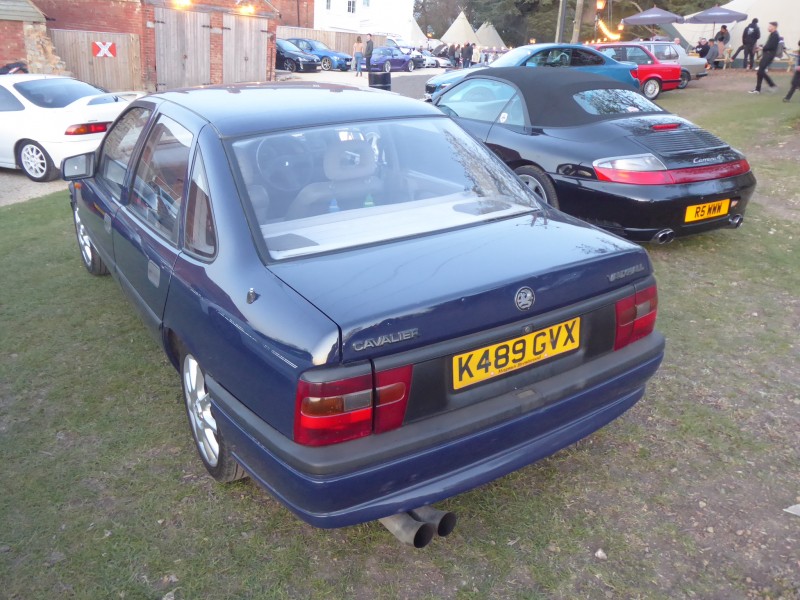

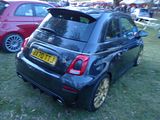
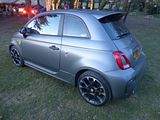


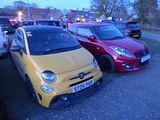
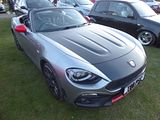

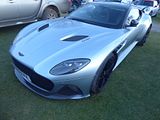
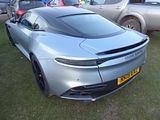
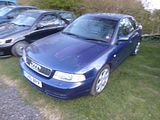
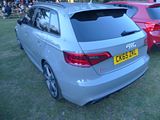
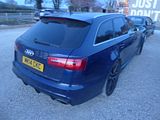


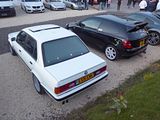
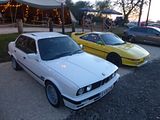
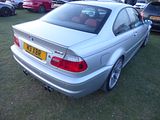
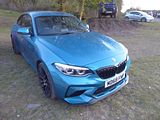
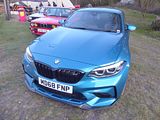
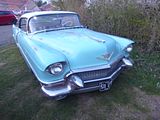
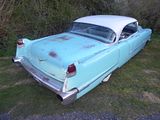
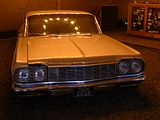
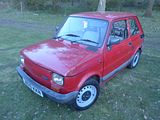
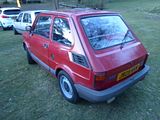
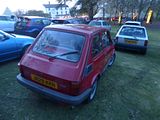
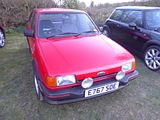
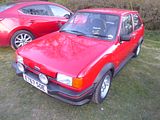
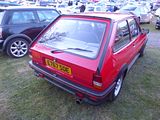
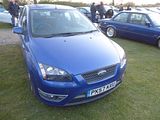
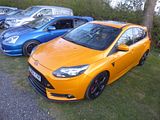
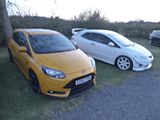
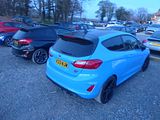

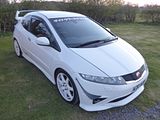
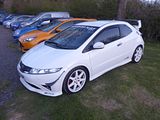
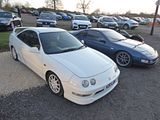

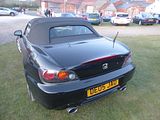
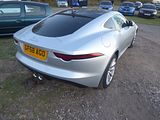
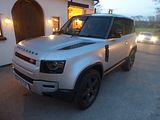
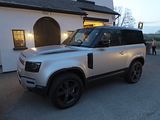

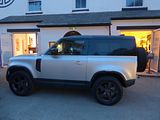
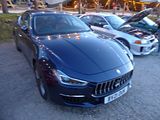
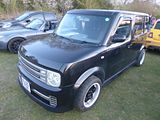
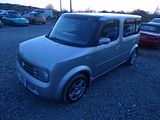
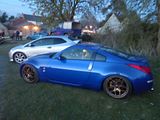

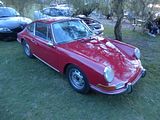
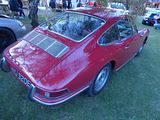
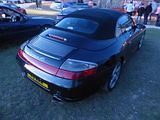
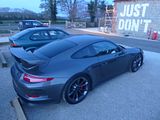

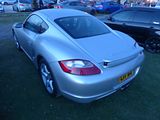
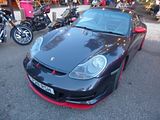
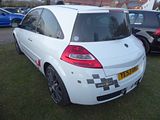
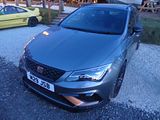
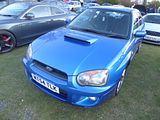
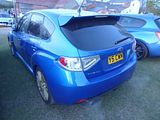
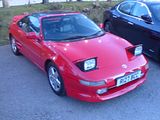
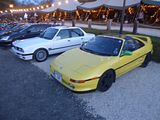
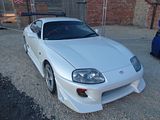
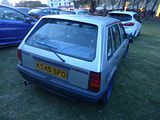
.JPG?width=180&height=120&fit=bounds)
